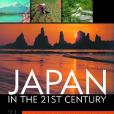內容簡介
The ancient civilization of Japan, with its Shinto shrines and Buddhist temples, is also closely associated with all that is new and modern. Looking outward, Japan sees what it has become since Hiroshima: the world's second-largest economy, a source of fury and wonder, a power without arms. Looking inward, Japan sees old ways shaken and new ones developing at a hectic pace. Jap...(展開全部) The ancient civilization of Japan, with its Shinto shrines and Buddhist temples, is also closely associated with all that is new and modern. Looking outward, Japan sees what it has become since Hiroshima: the world's second-largest economy, a source of fury and wonder, a power without arms. Looking inward, Japan sees old ways shaken and new ones developing at a hectic pace. Japan in the Twenty-first Century offers compelling insights into the current realities of the country and investigates the crucial political, economic, demographic, and environmental challenges that face the nation. A combination of text, maps, and photographs provides an essential understanding of Japan's geography, cultural heritage, demography, economic and political development, and of many other important issues. Pradyumna P. Karan explores the obstacles and opportunities that will shape Japan and affect the world community in the coming years. He highlights strategies and policies that will facilitate economic and political change and stimulate the development of effective institutions for long-term, sustainable prosperity and economic vitality. Unique field reports drawn from direct observations of events and places in Japan illuminate Japanese traditions and sensibilities. The first full-length English-language textbook on Japan's geography, culture, politics, and economy to appear in nearly four decades, Japan in the Twenty-first Century will be a vital resource for researchers, academics, general readers, and students of Japan. Pradyumna P. Karan, professor of geography and Japan stud

